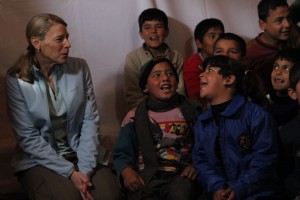
When we came inside the tent, the Syrian family of eight welcomed us warmly and urged us to sit close to the small stove in the center for warmth.
While the weather had improved from the previous weeks when a winter storm dropped several inches of snow and temperatures dropped below freezing, it was still very chilly. It looked like the children were wearing many of the clothes they owned, layer upon layer, though the smallest little girl still had bare feet. With our Lebanon team translating, we talked and learned how this family fled Syria under fire on their farm near Homs and had been living in this makeshift camp of about 100 families for close to a year. None of the children, from high school age down to four years old, had been able to go to school since they left home—but their father talked proudly about how they had excelled back in Syria, when all had a house to live in and a school to go to. Now, he said, he feared they would fall so far behind they could never catch up. And we learned later that several of the children were working as laborers to support the family, something the father was too ashamed to tell the strangers who came to visit.
Child refugees from Syria now number over one million across the region, with an estimated 400,000 in Lebanon alone. For most of these children, their childhood has been put on hold and for many it will never be revisited. Many teenagers will most likely never go back to school. What will this mean for the future of Syria when families are finally able to return?
My first trip to Lebanon since the crisis in Syria was a sobering one. It is a country of about four million people and is now home to close to one million refugees from Syria—25% of its population. That’s like if 75 million people suddenly arrived on our borders in Texas or California. We would certainly be reeling if such a thing happened and the Lebanese are struggling too. Given the infrastructure challenges of such a huge influx of people, it’s not a surprise that many children have not been able to get into school even two or three years after they left Syria.
Luckily, small efforts are making a big difference for these children. We visited a government school in Bekaa Valley that has agreed to run “second shift” programs for Syrian children. Here, with support from Save the Children, kids are able to come to school in the afternoons for about three hours, after the regular classes have left, and have basic instruction in math, reading and science in their native languages of Arabic and English. Some instruction in regular Lebanese classrooms is in French, a language very few Syrian children speak, making it tough for Syrian children to attend regular classes in Lebanon. Though “second shift” does not provide a full day of instruction, dedicated teachers are able to at least keep kids leaning and engaged.
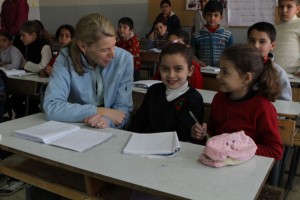 But probably the biggest benefit of this effort is what being back in the classroom means for these children emotionally. In stark contrast to the quiet, withdrawn children we met in tents in the makeshift camps, kids at the school were smiling, jumping up eagerly to answer the teacher’s questions, joking and playing with us and just so obviously happy to be in school, a place that seemed to finally make them feel like normal kids again.
But probably the biggest benefit of this effort is what being back in the classroom means for these children emotionally. In stark contrast to the quiet, withdrawn children we met in tents in the makeshift camps, kids at the school were smiling, jumping up eagerly to answer the teacher’s questions, joking and playing with us and just so obviously happy to be in school, a place that seemed to finally make them feel like normal kids again.
It’s heartbreaking to think that millions of kids inside and outside Syria aren’t benefiting from being in a classroom. Save the Children is working hard to make sure that more Syrian children have the chance to get back to school, get back to a (new) “normal” and get back to experiencing the childhood they need and deserve.
You can help the Children of Syria by joining my fundraising team at SavetheChildren.org/refugee




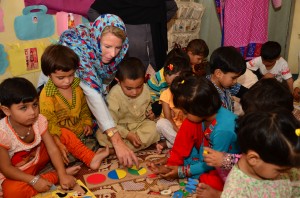
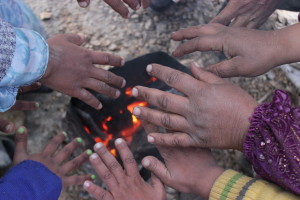
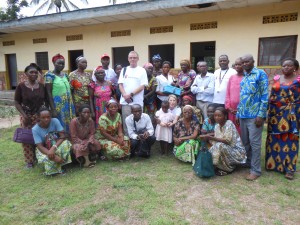

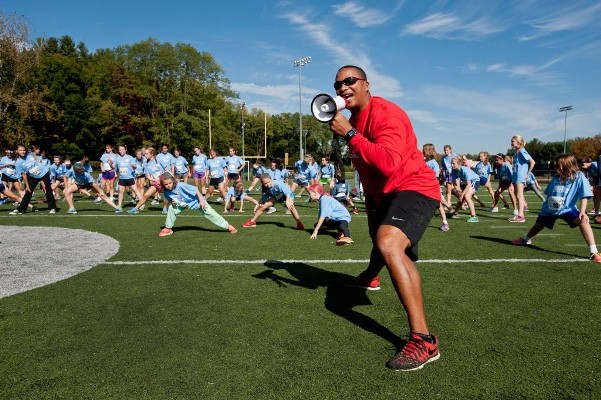 Former NFL running back Vince Workman warming up members of the Wilton High School sports teams for the World Marathon Challenge in Wilton, Conn. on Oct. 14. Photo by Susan Warner for Save the Children.
Former NFL running back Vince Workman warming up members of the Wilton High School sports teams for the World Marathon Challenge in Wilton, Conn. on Oct. 14. Photo by Susan Warner for Save the Children.